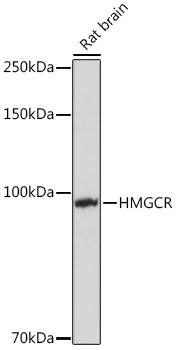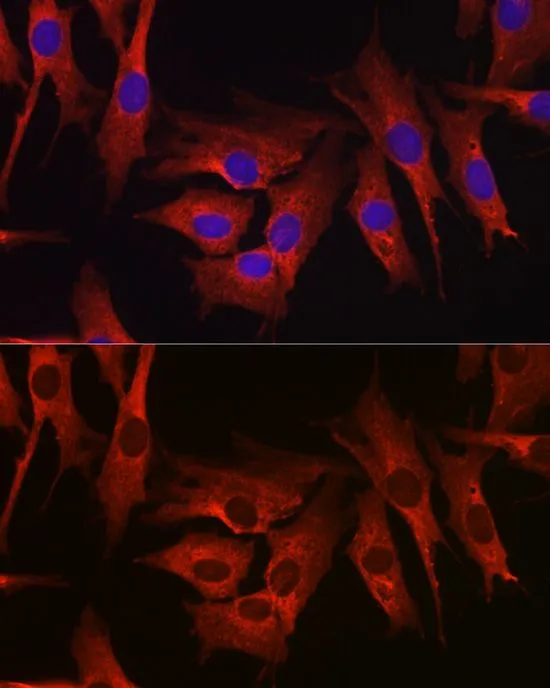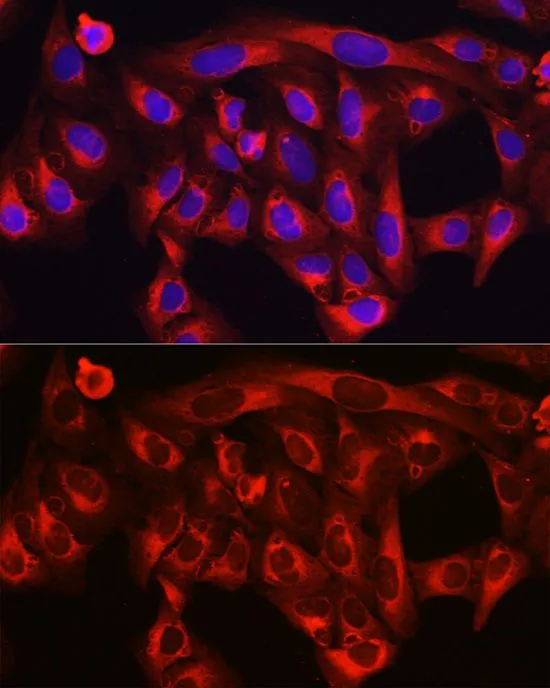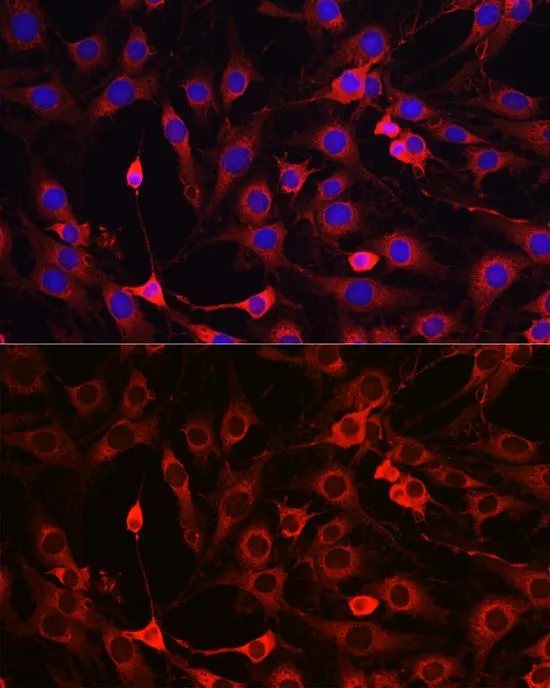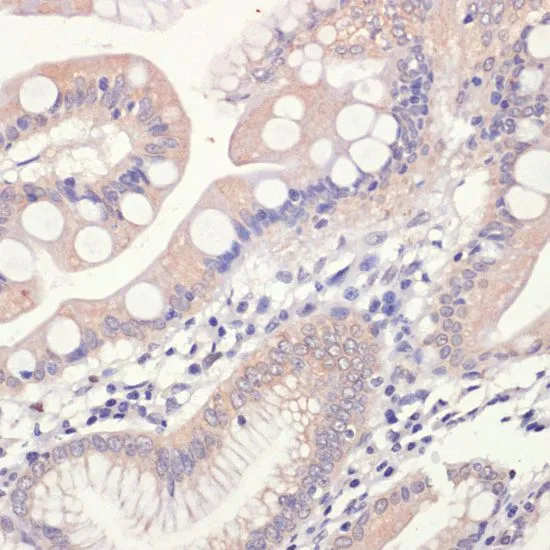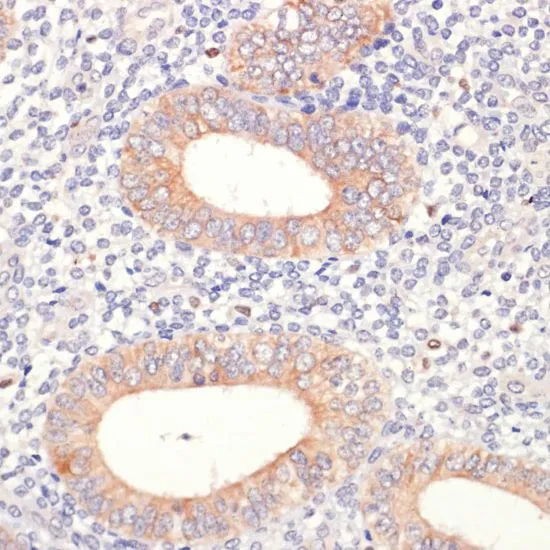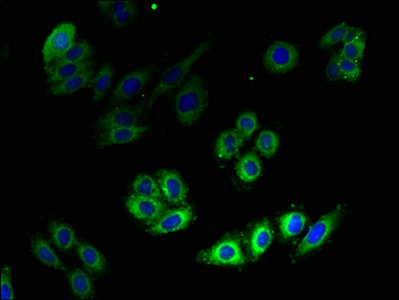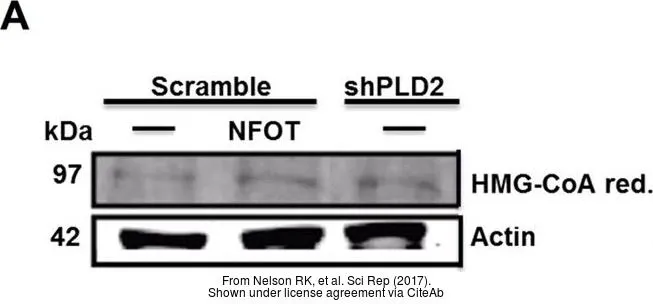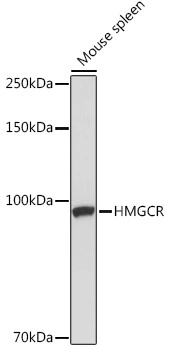
WB analysis of mouse spleen tissue lysate using GTX54088 HMGCR antibody. Dilution : 1:1000 Loading : 25microg per lane
HMGCR antibody
GTX54088
ApplicationsImmunoFluorescence, Western Blot, ImmunoCytoChemistry, ImmunoHistoChemistry, ImmunoHistoChemistry Paraffin
Product group Antibodies
TargetHMGCR
Overview
- SupplierGeneTex
- Product NameHMGCR antibody
- Delivery Days Customer7
- Application Supplier NoteWB: 1:1000 - 1:4000. ICC/IF: 1:50 - 1:200. IHC-P: 1:50 - 1:100. *Optimal dilutions/concentrations should be determined by the researcher.Not tested in other applications.
- ApplicationsImmunoFluorescence, Western Blot, ImmunoCytoChemistry, ImmunoHistoChemistry, ImmunoHistoChemistry Paraffin
- CertificationResearch Use Only
- ClonalityPolyclonal
- Concentration1 mg/ml
- ConjugateUnconjugated
- Gene ID3156
- Target nameHMGCR
- Target description3-hydroxy-3-methylglutaryl-CoA reductase
- Target synonymsLDLCQ3, LGMDR28, MYPLG, 3-hydroxy-3-methylglutaryl-Coenzyme A reductase, 3-hydroxy-3-methylglutaryl CoA reductase (NADPH), HMG-CoA reductase, hydroxymethylglutaryl-CoA reductase
- HostRabbit
- IsotypeIgG
- Protein IDP04035
- Protein Name3-hydroxy-3-methylglutaryl-coenzyme A reductase
- Scientific DescriptionHMG-CoA reductase is the rate-limiting enzyme for cholesterol synthesis and is regulated via a negative feedback mechanism mediated by sterols and non-sterol metabolites derived from mevalonate, the product of the reaction catalyzed by reductase. Normally in mammalian cells this enzyme is suppressed by cholesterol derived from the internalization and degradation of low density lipoprotein (LDL) via the LDL receptor. Competitive inhibitors of the reductase induce the expression of LDL receptors in the liver, which in turn increases the catabolism of plasma LDL and lowers the plasma concentration of cholesterol, an important determinant of atherosclerosis. Alternatively spliced transcript variants encoding different isoforms have been found for this gene. [provided by RefSeq, Aug 2008]
- Storage Instruction-20°C or -80°C,2°C to 8°C
- UNSPSC12352203
References
- Lupo MG, Marchianò S, Adorni MP, et al. PCSK9 Induces Rat Smooth Muscle Cell Proliferation and Counteracts the Pleiotropic Effects of Simvastatin. Int J Mol Sci. 2021,22(8). doi: 10.3390/ijms22084114Read this paper
- Tsai YT, Ruan JW, Chang CS, et al. Antrodia cinnamomea Confers Obesity Resistance and Restores Intestinal Barrier Integrity in Leptin-deficient Obese Mice. Nutrients. 2020,12(3). doi: 10.3390/nu12030726Read this paper

